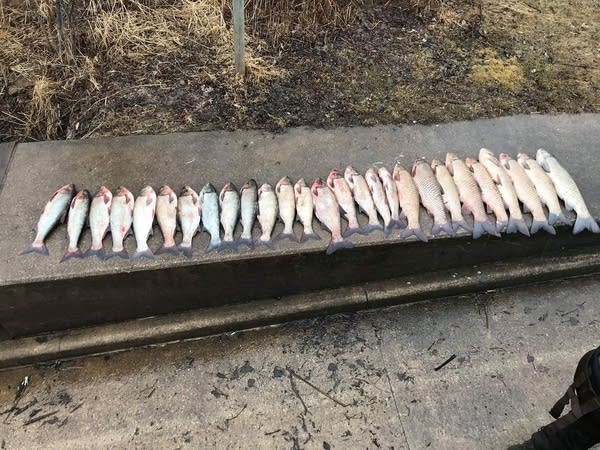Minnesota lawmakers back $12M for invasive carp barrier in Mississippi River

Go Deeper.
Create an account or log in to save stories.
Like this?
Thanks for liking this story! We have added it to a list of your favorite stories.
A bill containing $12 million to install a barrier in the Mississippi River in southern Minnesota to prevent invasive carp from swimming upstream is headed to Gov. Tim Walz for his likely signature.
The legislation directs nearly $240 million in spending from a dedicated sales tax for the outdoors, water, parks and trails and the arts. Both the House and Senate have now passed the final version.
If it’s signed into law, the funding will be available to the Minnesota Department of Natural Resources on July 1, said Colleen O’Connor Toberman, land use and planning director for the nonprofit Friends of the Mississippi River.
She called the bill’s passage “great news” for Minnesota’s efforts to protect the Mississippi and its tributaries from invasive carp.
Turn Up Your Support
MPR News helps you turn down the noise and build shared understanding. Turn up your support for this public resource and keep trusted journalism accessible to all.
“It lets us implement the latest research and science we have as quickly as possible,” O’Connor Toberman said. “We don’t think we have much time to waste.”
The DNR will partner with federal agencies to design and install the barrier at Lock and Dam No. 5 near Winona, a location some researchers believe is the most effective location for a deterrent.
It’s just upstream of where the DNR is finding increasing numbers of invasive carp, particularly silver carp, O’Connor Toberman said.
“We know that the fish are kind of knocking at the door of this location, but don’t seem to be passing it in large numbers yet,” she said.
The U.S. Fish and Wildlife Service, the Army Corps of Engineers and the U.S. Geological Survey also will be involved in the project.
The bill doesn’t specify the type of barrier. Other states are testing acoustic systems that use sound and a bubble curtain to deter the invasive fish from swimming upstream.
Invasive carp have been steadily advancing up the Mississippi River since their accidental release in the 1970s. They are voracious eaters and outcompete native fish, leading to a decline in biodiversity and water quality in rivers where they’re established.
Individual invasive carp have been caught as far upstream as the Twin Cities metro. In February, commercial anglers working for the DNR captured 82 silver carp and one bighead carp in the Mississippi River near Winona.
Environmental advocates had hoped the Legislature would fund the barrier last year, when the state had a large budget surplus. However, DNR officials said more work was needed to determine whether a deterrent is the best solution.
This year, the Lessard-Sams Outdoor Heritage Council voted to recommend $12 million for the barrier from the Outdoor Heritage Fund — one of four funds created by the Clean Water, Land and Legacy Amendment approved by voters in 2008.
The bill also includes money to address nitrate contamination, enhance parks, restore wildlife habitat and floodplains and fund arts programs.



